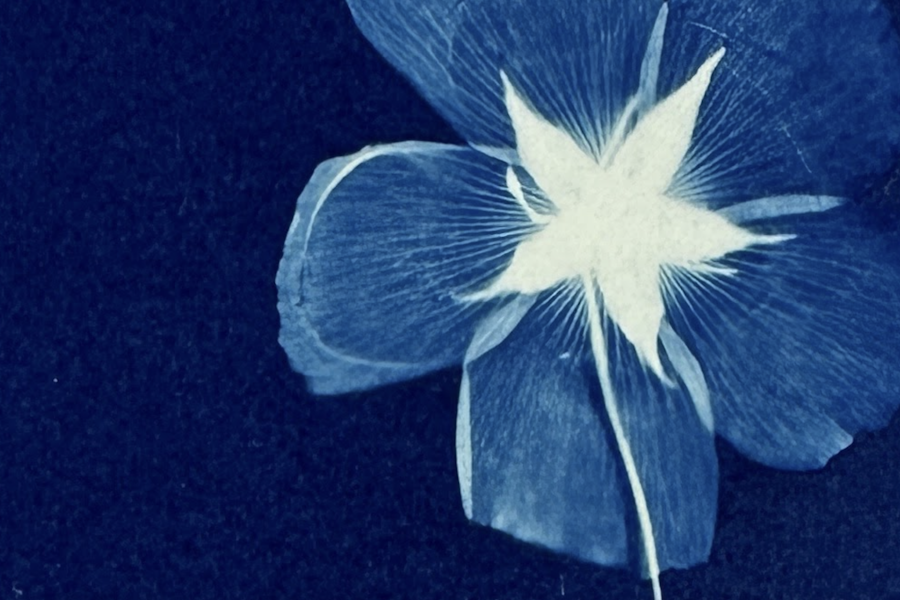In the spring of 2020, I began experimenting with cyanotype printmaking, an alternative photographic process first developed in 1842. I focused on creating prints of flowers, ferns, and other botanical specimens I found on walks in the park near my apartment — all in the shades of blue that are the hallmark of cyanotype prints.
The choice of an antiquated medium characterized by a single color was odd and rather limiting, at first. The finished print lacks the dimensionality of the original specimen, preserving some aspects of its structure and obscuring others; at the same time, the blue tones of the print replace the original’s familiar colors.
But I’ve come to regard cyanotype’s constraints with a certain gratitude. They have demanded I take a curious, experimental attitude to beauty:
Would this texture be apparent in a print?
What would a simple silhouette of this stem look like?
Often, a flower that seems particularly beautiful at first glance would produce a far less interesting print than its apparently plainer cousin. For me, the process of creating the prints renders both the specimen and the resulting print somehow stranger and worthy of closer attention.
Although my experimentation with cyanotypes has often shown me the value of an inquisitive attention to beauty, I find I still need frequent reminders. In July of this year, I found several poppy mallow blooms on one of my walks. They are fairly common in my area — pretty and delicate, but not unique or particularly remarkable. I picked three, pressed them, and promptly forgot about them until the middle of October. At that point, under the influence of a sudden urge to clear out specimens I did not anticipate using for future prints, I finally attempted to print a cyanotype with one of the dried poppy mallows. The result was completely unexpected: the center of the printed bloom displayed a pattern like rays of light behind the more obvious star shape of the sepal.

“This is,” in the words of historian Helen Waddell, “that strangeness without which beauty is not made perfect”: a strangeness that follows from looking closely a moment longer than pragmatism requires, and allowing ourselves to be startled by the elegance of what we see. My habit — our habit, culturally — is to hustle from one thing to the next, often with headphones on and eyes straight ahead, not pausing to take in my present surroundings. I want to reject that impulse, to pay such close attention to the place I find myself in that its beauty startles me. Such attention grows into love.
If I find it easy to love a poppy mallow for its strange, outrageous beauty, I am keenly aware that this love is nothing more than a response to the greater Love that created beauty. For me, the extravagant beauty of the poppy mallow stands as a testament to the extravagance of the love of God. On days when I struggle to see the pattern of God’s love in my own life, I am able to look at a poppy mallow and trust that if He has poured so much love and beauty into it, He must extend the same to me, and I am able to respond in love.
Beauty is a place where these two loves — my small one and God’s great one — can meet, and I can receive the extravagance of the love of God, one poppy mallow at a time.

Related Podcast
All images and essay copyright © Sally Kendrick, 2023. Used with permission.
· Last Featured on Renovare.org October 2023


